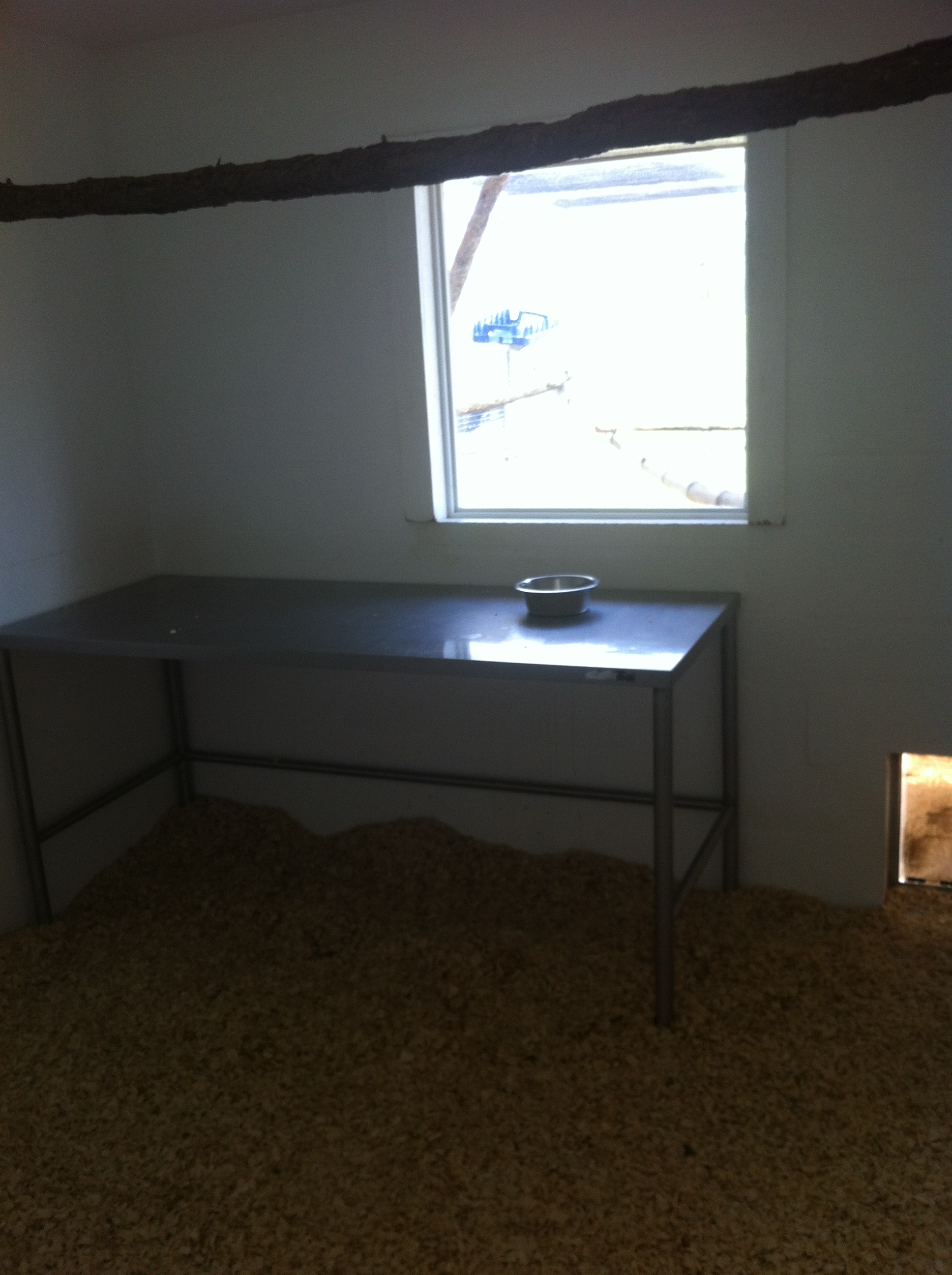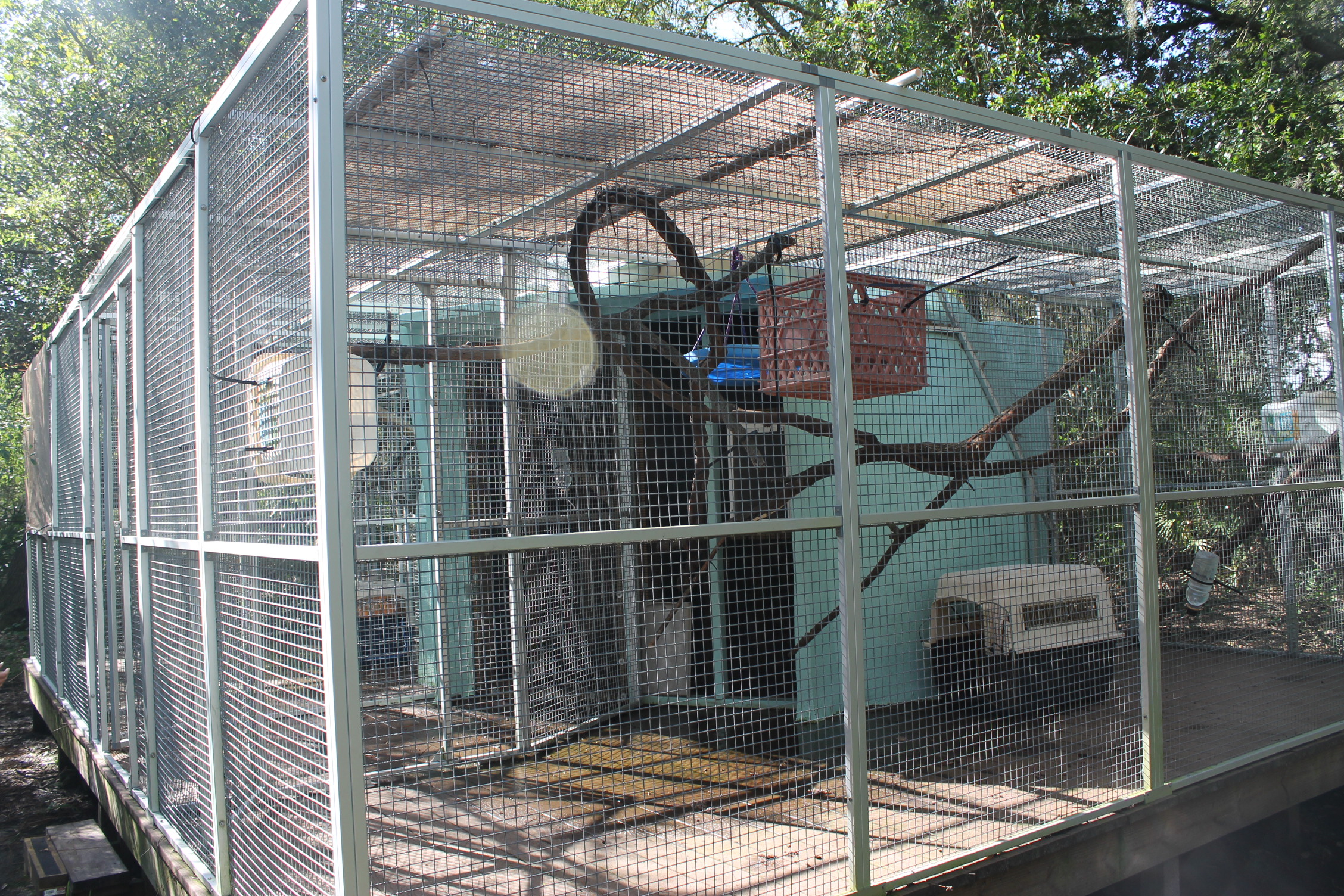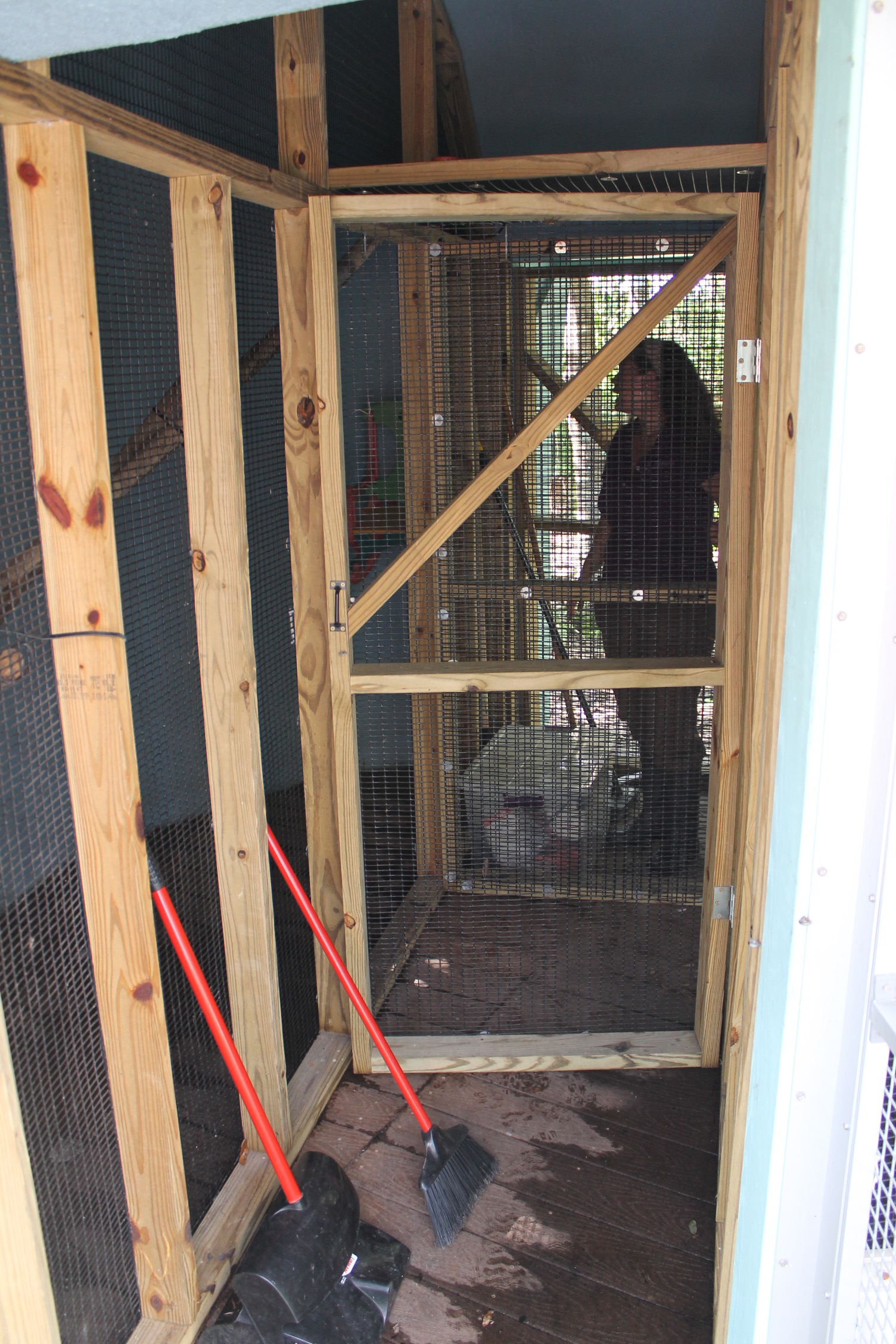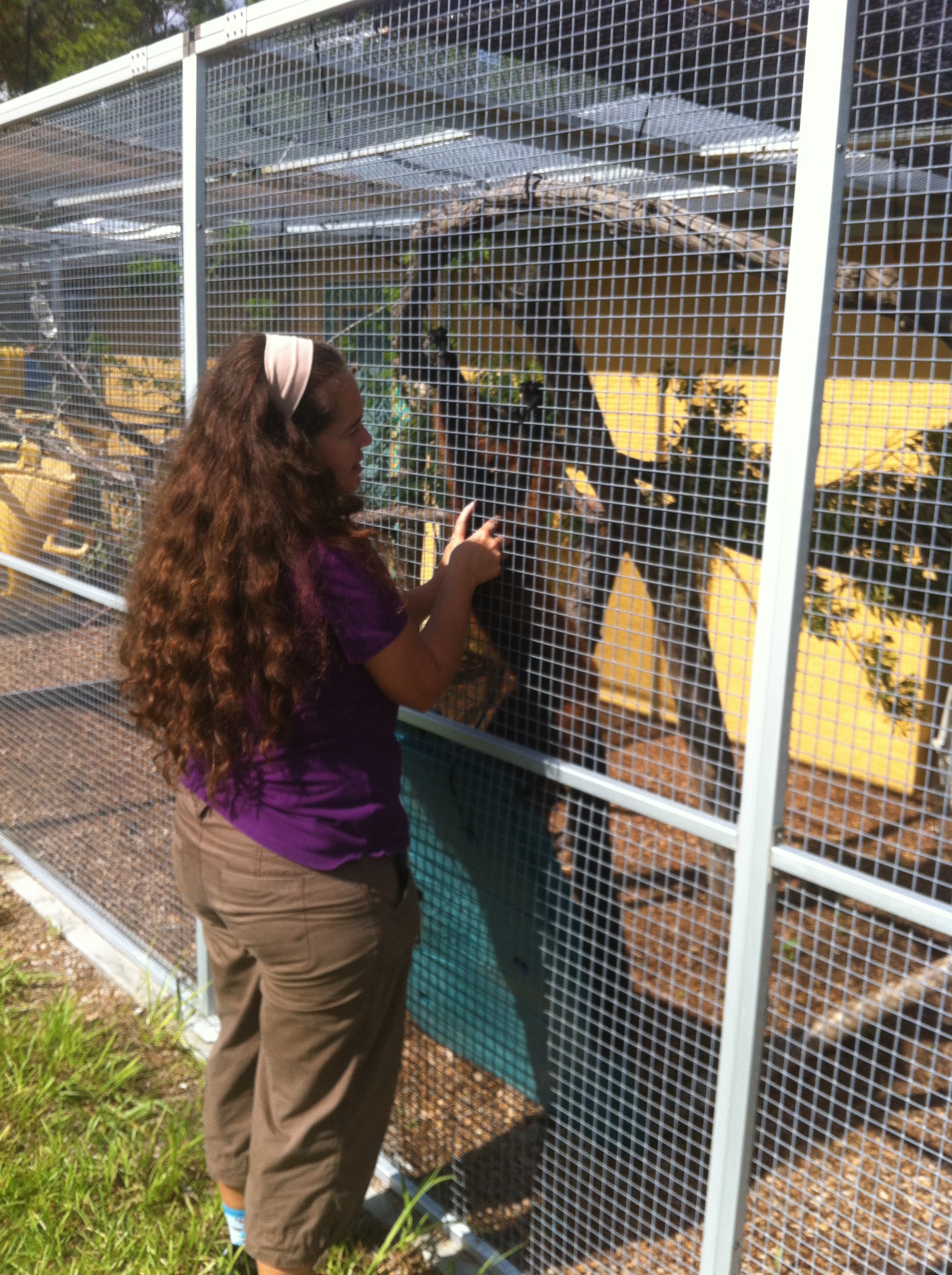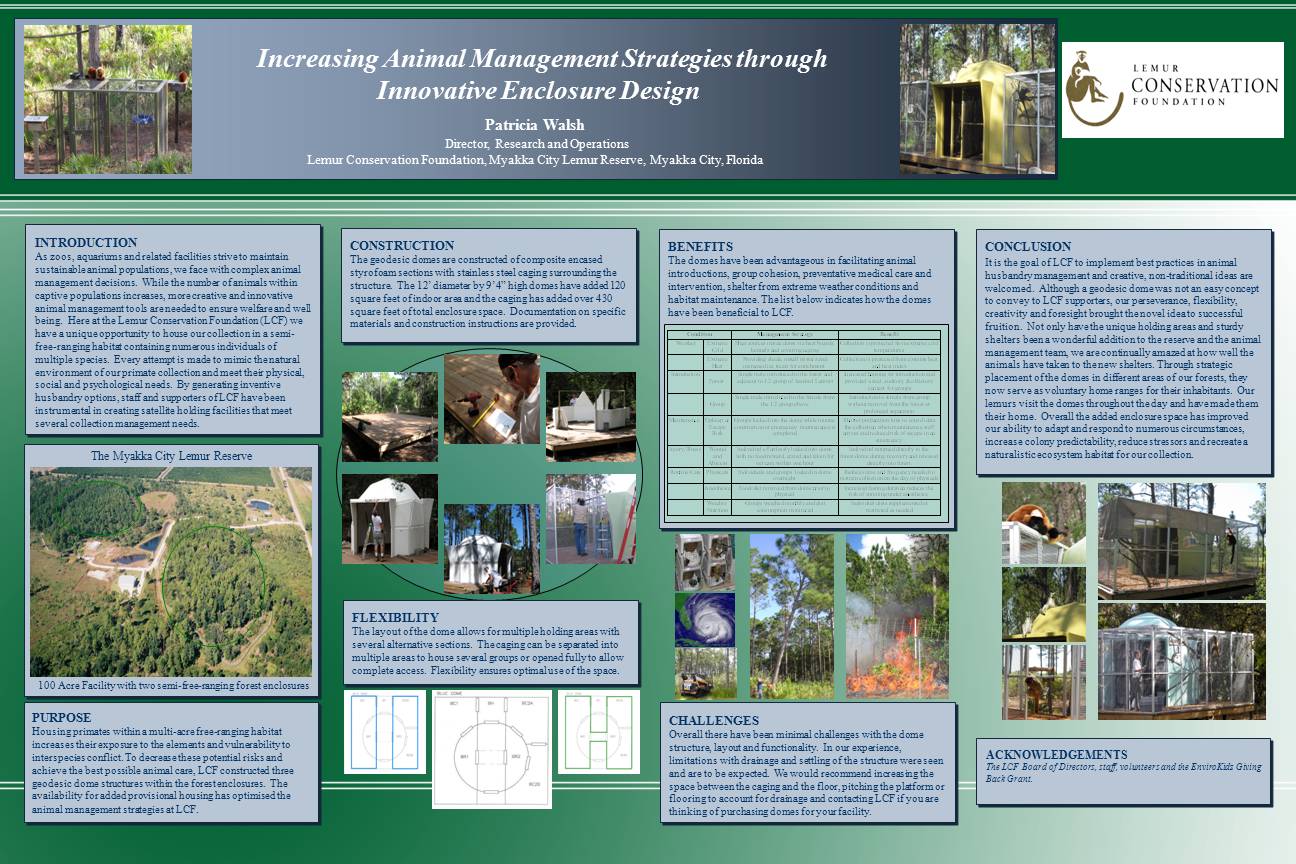After a quick email exchange and phone conversation with Patti Walsh, Director of Research and Operations at the Lemur Conservation Foundation, a visit to their Lemur Reserve was in order. Located just outside Myakka City, FL, a town with little more than a farm store and a yellow light, the Reserve is over 100 rural acres of mixed pine and oak forest.
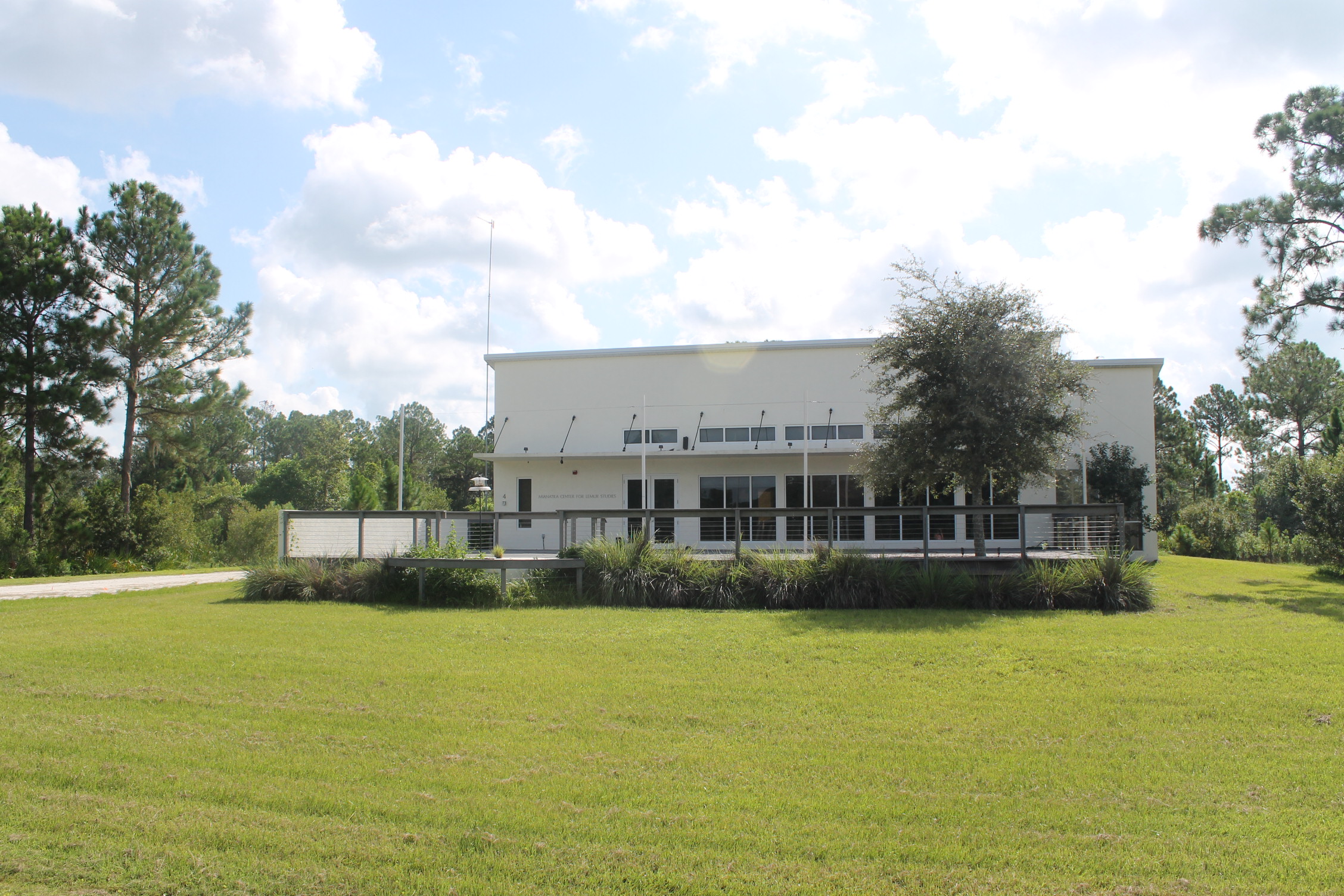
The Foundations’ 44 lemurs have free-range within two fenced-in forested yards, 10 and 13 acres each. Compatible breeding groups are rotated between these two yards and holding facilities near the yards. The holding facilities have both indoor stalls (of various size, but averaging 8’ x 8’) immediately adjacent to outdoor, fully enclosed yards. These yards are approximately 20’ x 10’ x 8’ tall, and are elegantly appointed with all manner of lemur fun, playtime equipment.
Within each large forested yard, lemurs have the option to hang out in a holding facility featuring a geodesic dome which provides respite from the weather. The domes are made from Styrofoam, covered in plaster, and offer insulating qualities in both the heat of summer in central Florida and the chilly temperatures that sometimes occur during winter. The domes are located between two elevated outdoor stalls, and allow indoor transfer between the two outdoor yards for maximum flexibility and in case of emergency.
Currently, the Reserve features a small on-site clinic space—really little more than a room with veterinary supplies, and each holding building has its own small kitchen space. The 13 acre yard holding building’s kitchen is slightly larger allowing for the bulk of food storage, but with fresh produce donations occurring twice weekly, no large cooler space is required.
The Reserve was opened in 2000 with 32 lemurs and continues to grow with successful breeding on-site. The lemurs are often lent to other institutions for breeding as directed by the SSP. Long-term plans include the addition of another forest yard but is limited by both funding and growth of currently scrubby shrubs and seedlings. In the short-term, the Foundation is looking forward to enlarging the clinic space to enable more procedures to occur on-site, rather than transporting, as they do now, to a local veterinarian, nearly 45 minutes away.
Ultimately, the goal of the Reserve is to return lemurs to the wild, but for now, it is used as a breeding facility and base for research. The lemurs here are interested in people, and several came from their patrols in the forest to check me out from their perches high in the trees. Those housed in the holding facilities ran to say hello. So amazing!
If I could suggest anything for this special place, it would be to create an experience that the public at large could enjoy—right now, only researchers and special guests are allowed. This would represent one version of the future of zoos as visualized by some designers.






